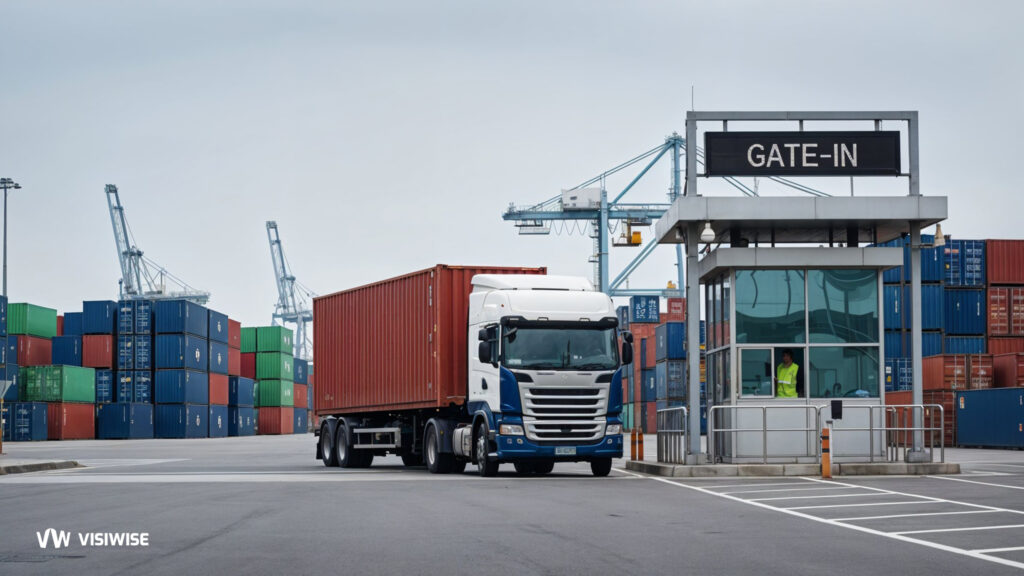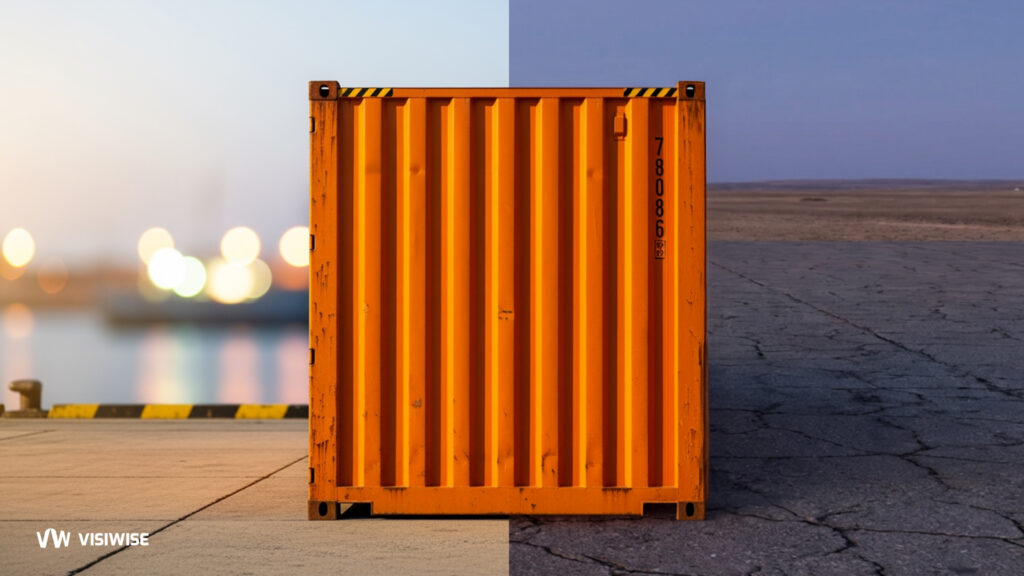When you started your small business, you probably dreamed of crafting the perfect product, connecting with customers, and building a brand you love. You almost certainly didn’t dream about wrestling with dimensional weight pricing, deciphering zone charts, or staring blankly at a screen comparing delivery timelines from Toronto to Tofino.
Yet, here we are. For Canadian entrepreneurs, shipping isn’t just a logistical step. It’s a complex, and often frustrating puzzle that directly impacts your bottom line.
This isn’t about finding a single "cheapest" button. Canada’s vast geography and competitive carrier landscape mean the winning move is becoming a savvy strategist. Let’s break down how you can master the game.
The Heart of the Matter: It’s All About “Ground”
If you take away one thing from this guide, let it be this: Embrace the ground. For the overwhelming majority of domestic, non-urgent packages, ground shipping is the undisputed champion of value.
I remember the "aha!" moment clearly. I was shipping a medium-sized box from my studio in Ontario to a customer in Vancouver. The expedited air quote was a heart-stopping $48. The ground shipping quote was $22. The delivery time? Expedited
promised 2 days. Ground promised 5. I took a chance on ground, the customer was perfectly happy with the timeline, and I saved enough to effectively ship my next two orders for free. That’s the power of this simple choice.
Services like Canada Post Regular Parcel, UPS Standard, and FedEx Ground form the backbone of cost-effective logistics in Canada. They move by truck, their networks are highly optimized, and their delivery standards, while not guarantees, are remarkably reliable for major corridors. For instance, a parcel from Toronto to Montreal will often arrive in 2 business days via ground; to Calgary, it might be 4-5. This isn’t the sluggish mail of decades past. It’s an efficient, modern system built for e-commerce.
Know Your Players: A Carrier Cheat Sheet
Each major carrier has its own personality and sweet spot. Think of them as different tools in your shed.
Canada Post: The Everywhere Network
- Their Superpower: Unmatched reach. If you’re shipping to a remote town in Newfoundland, the Yukon, or a rural farm in Manitoba, Canada Post is often your only—or at least your most sensible—option. Their “community mailbox” infrastructure means they go where others don’t, often without exorbitant surcharges.
- Best for: Lightweight packages (under 1 kg), rural/remote addresses, and businesses with low volume who need the flexibility of dropping off at a post office without pick-up fees.
- Watch Out For: Their rates can become less competitive as package weight increases beyond the 5kg mark compared to negotiated rates from integrated carriers.
UPS & FedEx: The Heavyweight Hitters
- Their Superpower: Speed and consistency on major routes. For shipping between urban centers like Calgary, Edmonton, Vancouver, Toronto, and Montreal, their ground networks are incredibly fast and reliable. A common piece of wisdom in the industry is that their “standard” service often feels like a premium one.
- Best for: Heavier packages, businesses with consistent volume that can negotiate discounts, and when you need robust tracking and reliability on core routes.
- The Real Secret: Never, ever pay retail rates. The prices on their public websites are for infrequent shippers. The moment you open a business account, you unlock an automatic discount. As your volume grows, you can (and should) regularly request rate reviews. The savings can be dramatic.
Regional Carriers: The Local Heroes
- Their Superpower: Hyper-localized pricing. In provinces like Ontario, Alberta, and B.C., carriers like Intelcom, Canpar, or even smaller local outfits can offer the absolute best rates for intra-provincial shipping.
- Best for: Businesses that do most of their business within their own province or a specific region.
- How to Access Them: You often won’t go directly to their website. Instead, you access their competitive rates through third-party shipping platforms and aggregators (which we’ll discuss next).
Beyond the Carrier: Your Tactical Toolkit
Choosing the right service is just the start. How you operate is where the real savings are found.
1. The Packaging Paradox: Your Box is Your Destiny
This is the most common mistake I see. You ship a small, lightweight item in a comically large box filled with air. You get charged a fortune. Why? Carriers use dimensional weight (DIM weight). They calculate a theoretical weight based on the box’s volume (L x W x H / a divisor) and charge you based on whichever is greater: the actual weight or the dimensional weight.
The Fix: Invest in a range of box sizes. Use a tape measure. Use recycled packing materials that fit snugly. Right-sizing your packaging isn’t just eco-friendly; it’s one of the easiest ways to cut costs immediately.
2. The Aggregator Advantage: Why You Need a Shipping Coach
Stop jumping from website to website comparing shipping rates. What if you could just enter your package info once and instantly see all your options from Canada Post, UPS, FedEx, and others, neatly laid out for you? That’s the magic of a multi-carrier platform.
For just a few bucks a month, it’s like having a logistics pro on your team, making sure you never overpay for a package again. It finds the hidden deals so you can focus on your business, not on your shipping bills.
3. The Customer Conversation: Transparency is Trust
A huge part of the shipping cost equation is managing customer expectations. Be upfront about your processing times and the fact that you use economy services to keep product prices low. Offer expedited shipping as a paid upgrade for those who need it.
Consider ditching flat-rate shipping. Using real-time calculated shipping rates at checkout is the fairest system. The customer in Winnipeg pays exactly what it costs to ship to them, and the customer in Toronto does the same. It protects your margins perfectly and feels transparent and fair.
Putting It All Together: A Real-World Scenario
Let’s say you run a pottery studio in Halifax, NS. You sell a handmade mug that weighs 1.5 kg packaged.
- Customer A is in downtown Toronto. You plug the details into your shipping platform. It tells you UPS Standard is $19 and will arrive in 3 business days. FedEx Ground is $20. Canada Post is $23. You choose UPS, print the label, and save a few bucks.
- Customer B is in a small village in northern Manitoba. You run the same details. Now, Canada Post is $25, while UPS and FedEx want $45+ due to a remote area surcharge. You choose Canada Post, save your customer money, and know the package will arrive without a hitch.
This is the strategy in action. There is no loyalty, only smart, per-parcel decisions.
Real-World Hacks to Slash Your Shipping Costs
1. Become a Zone Detective
Here’s the secret carriers don’t lead with: distance is everything. Every carrier has a map divided into "zones" radiating from your warehouse. Shipping to your next-town-over neighbor (Zone 1) is cheap. Shipping to a coastal town across the country (Zone 8) will cost you.
- The Hack: Get intimately familiar with where your customers actually are. If you notice a huge chunk of your orders are coming from one far-away zone, it might be time to think about a strategic partnership with a fulfillment center in that region to bring your shipping origin point closer to them. It sounds advanced, but it can start small.
2. Your Packaging is a Silent Budget Killer
My single biggest "aha!" moment was investing in a simple postage scale. Guessing weight is a guaranteed way to lose money. But it’s more than that. That giant box you’re using for a tiny t-shirt? You’re not just shipping a shirt; you’re shipping air, and carriers charge you a "dimensional weight" fee for that privilege.
- The Hack: Right-size everything. Get a variety of box sizes. Use custom-fit packaging for your flagship product. Reuse sturdy old boxes for personal shipments. The goal is a snug fit, not a cavernous echo chamber for your item.
3. Don’t Pay Retail for Supplies
You’d be amazed what’s available for free or at a deep discount. USPS offers free flat-rate boxes. UPS and FedEx have online stores for business customers with heavily discounted supplies. And never underestimate the power of buying tape, bubble wrap, and mailers in bulk. The upfront cost stings, but the per-shipment savings are a quiet victory every single day.
4. Ask for a Better Rate (Seriously, Just Ask)
Carriers are in a fierce competition for your business. If you’re shipping more than a handful of packages a week, you should not be paying the standard retail rates listed on their websites. Open a business account and you automatically get a discount. As your volume grows, pick up the phone and ask for a better deal. The worst they can say is no, but I’ve found they often say yes.
5. Your Ecommerce Platform is a Goldmine
Platforms like Shopify, BigCommerce, and Amazon have massive negotiated discounts with carriers that they pass on to you. Make sure you’re using their built-in shipping labels instead of going directly to the carrier’s website. You might be surprised to see that the platform’s "discounted rate" is often cheaper than the "business discount" you negotiated yourself.
6. Rethink Insurance for High-Value Items
If you’re insuring expensive orders through the carrier, you’re probably paying a premium. Third-party insurance companies often provide the same coverage for nearly half the price. It’s a simple switch that can save a considerable amount if you regularly ship items that would be painful to replace.
7. Consider the Prepaid Label Play
If you have a superstar product that you ship out constantly in the same box, see if your carrier offers prepaid label packs. Buying labels in bulk for a known weight/size can unlock serious savings—sometimes up to 20%—and it makes fulfillment lightning fast.
8. Ditch the Box (When You Can)
Not everything needs a fortress of cardboard. For non-fragile items like apparel, stickers, or fabrics, a tough poly mailer is a game-changer. It’s lighter, takes up less space, requires less tape, and almost always costs less to ship. Keep a variety of mailer sizes on hand.
9. Embrace the "Hybrid" Hack
Services like UPS SurePost or FedEx SmartPost are brilliant for cost-cutting on non-urgent packages. They let the big carrier (UPS/FedEx) handle the long-distance haul, then hand the package off to USPS for the "last mile" to the doorstep. The trade-off is speed—it’s slower—but the savings can be massive, often cutting costs in half.
10. Mark Your Calendar for Rate Hikes
This one is less about saving and more about not being blindsided. Every single year, like clockwork, carriers announce a General Rate Increase (GRI). It’s usually around 5%. They also love adding new surprise surcharges for things like "residential delivery" or "peak season." Know when these happen (usually January) so you can adjust your pricing or strategy accordingly. You can’t stop it, but you can plan for it.
11. Manage Customer Expectations, Especially During Holidays
This is a soft-cost saver. During the holiday madness, be brutally transparent with your customers. Post clear cutoff dates for standard shipping to arrive by Christmas. Gently encourage them to order early to avoid expensive expedited shipping fees. This saves you from a world of stress, frantic "where is my order?" emails, and eating the cost of overnight shipping to make things right. A well-informed customer is your best ally against costly shipping panic.
The Final Word
The cheapest shipping for your Canadian small business isn’t a single carrier. It’s a mindset of flexibility, a commitment to understanding the tools, and the wisdom to use technology to your advantage. Stop dreading shipping. Start strategizing, and watch those saved dollars add up to something significant.



